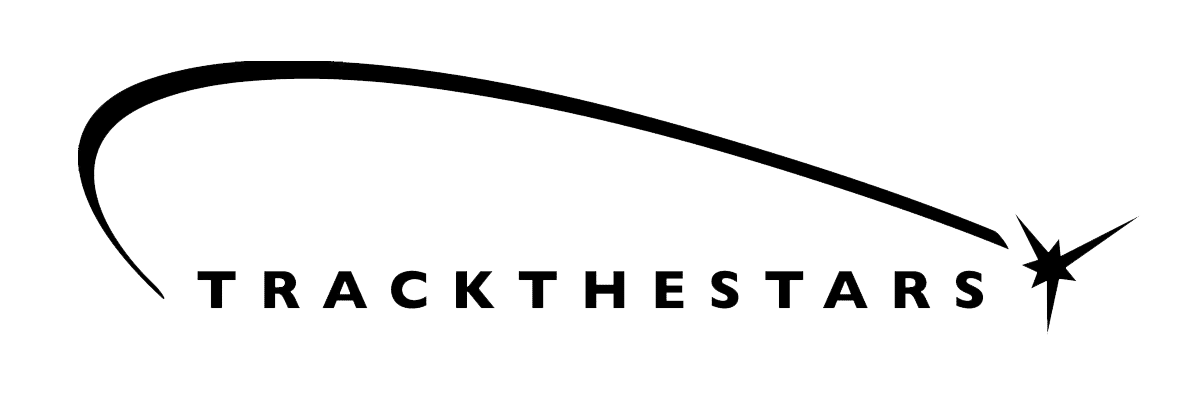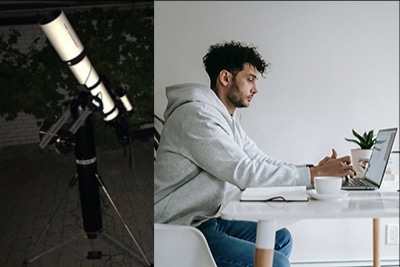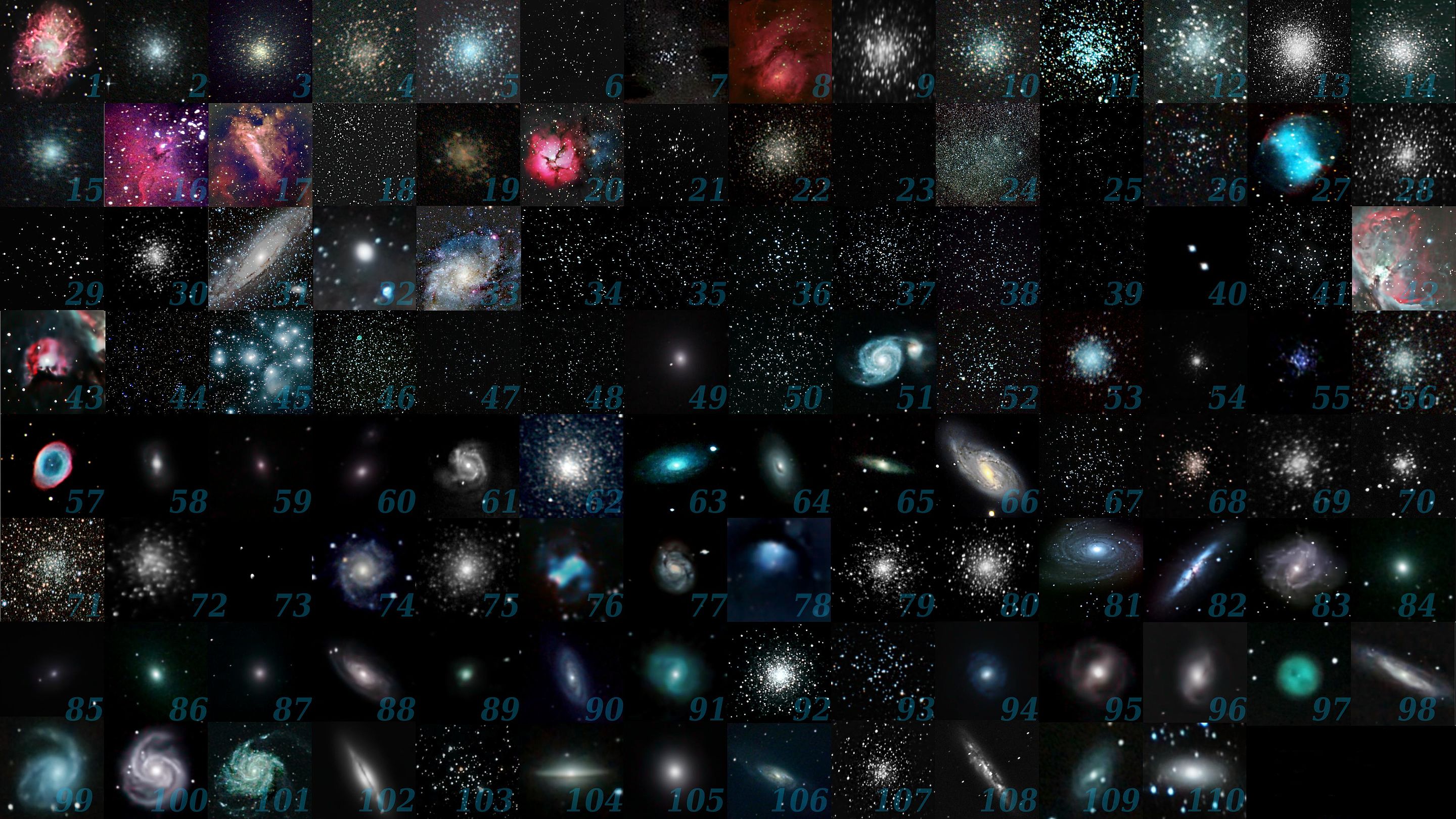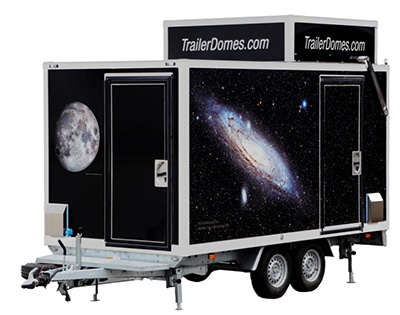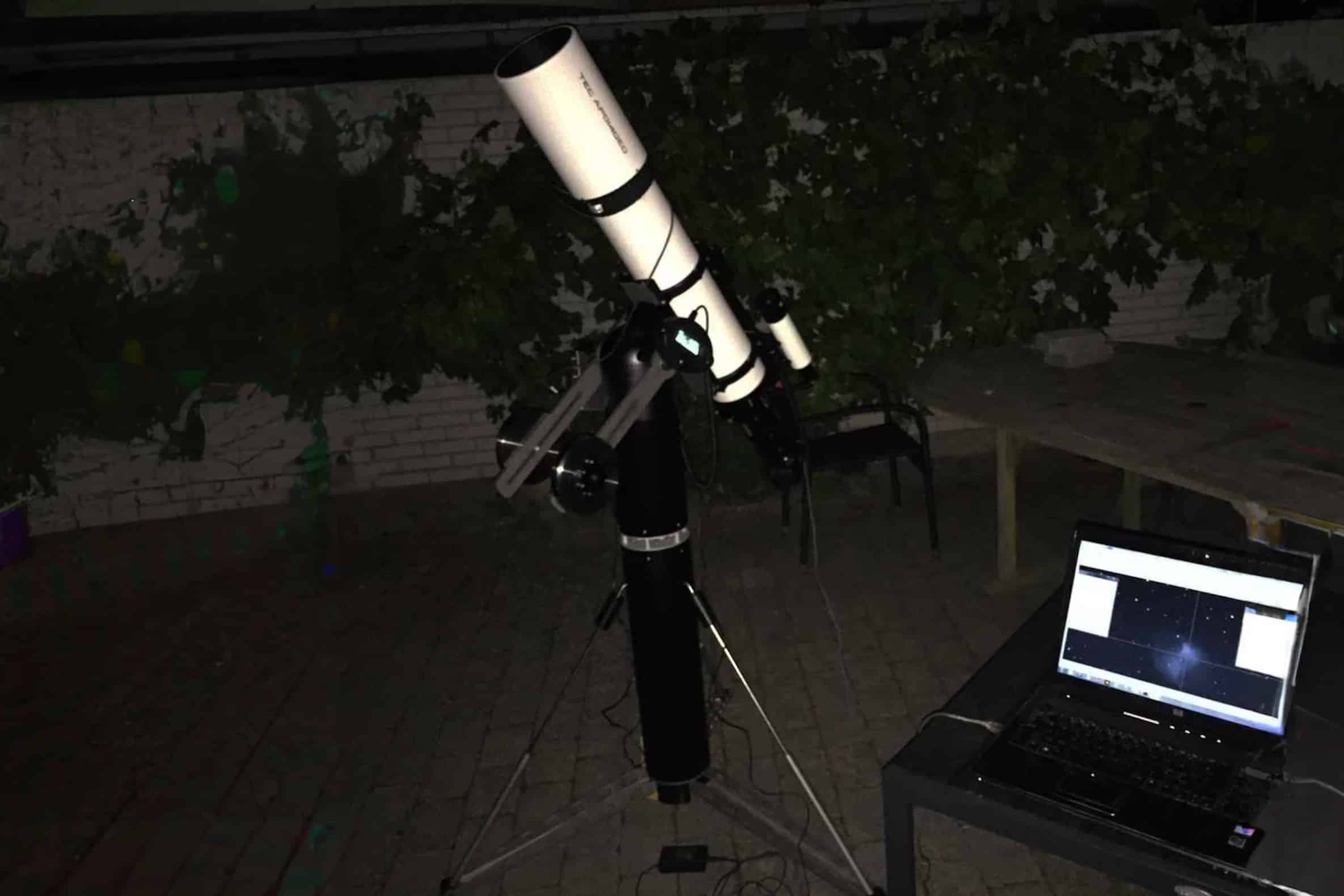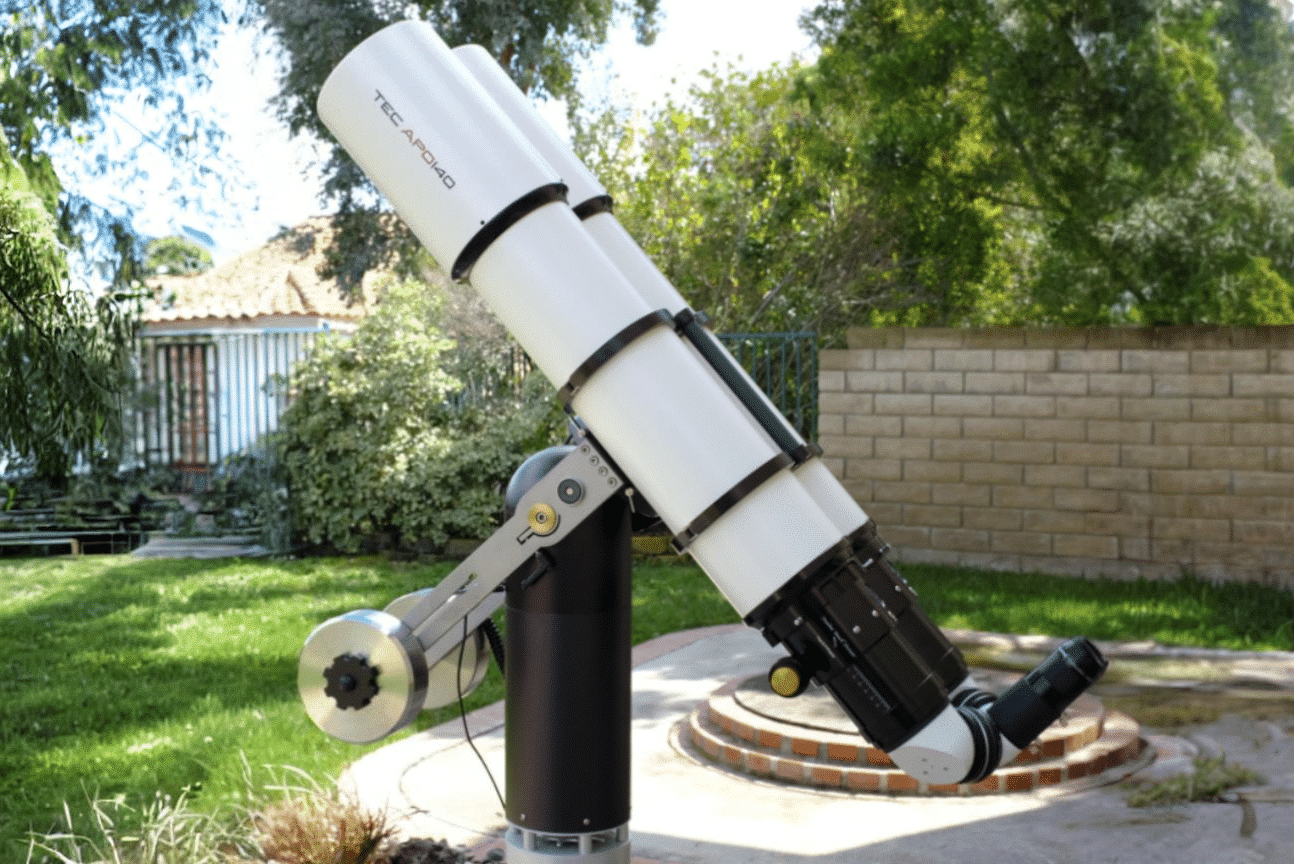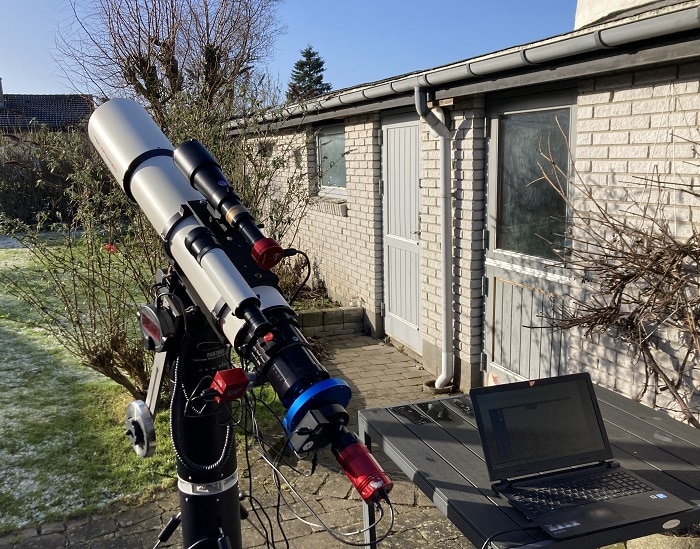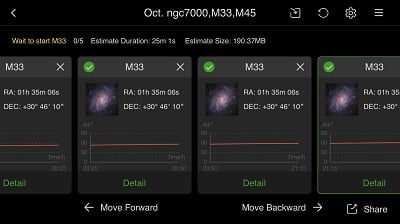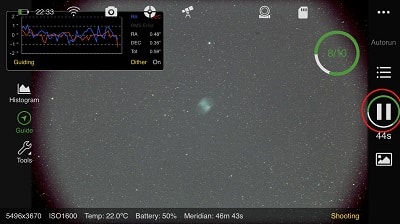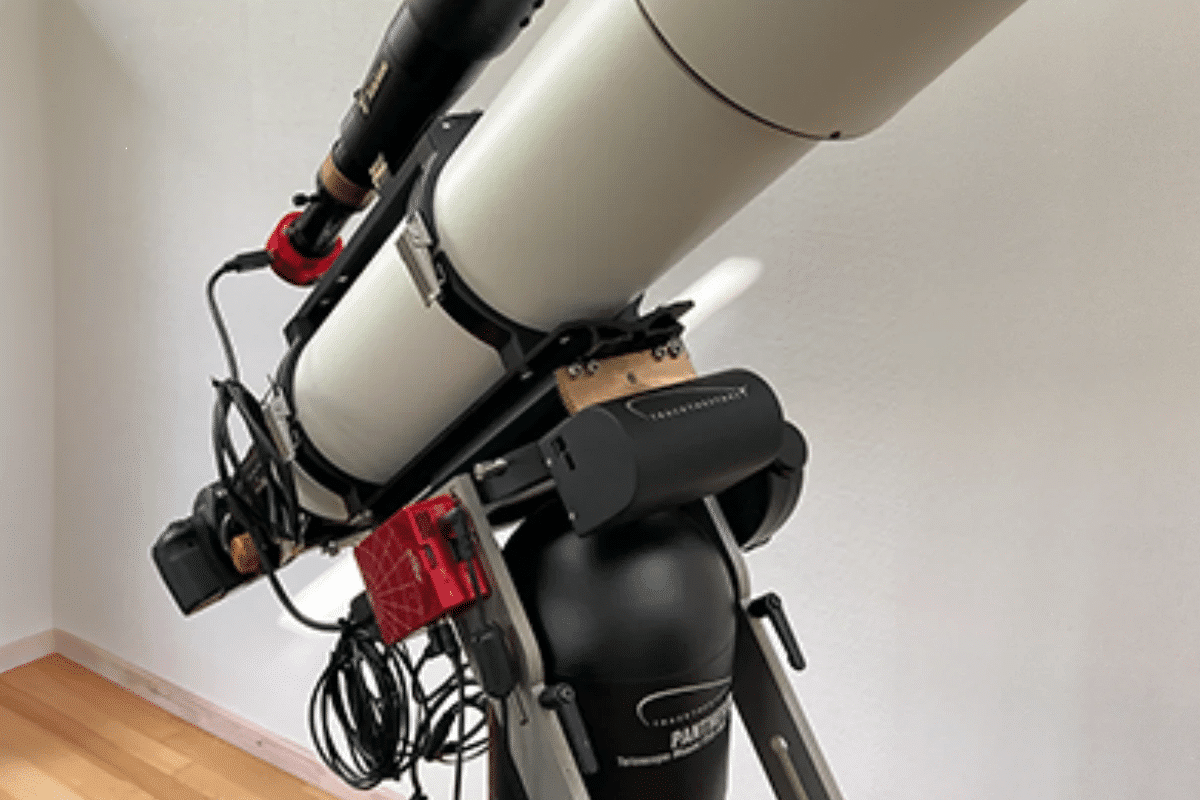Using a Camera rotator to take perfect Astrophotos with no polar alignment needed
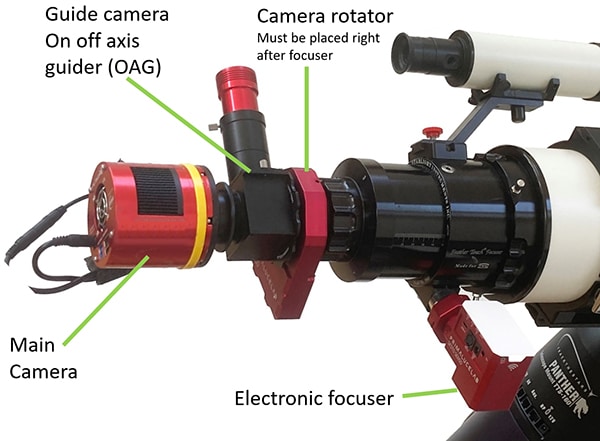 Camera rotators are today primarily used to frame the target when taking Astrophotos. With the newest high-resolution camera rotators, it is now possible to take perfectly tracked Astrophotos with an Alt-Az type telescope mount. Why bother doing that? Well, it means faster setup with no polar alignment and undisturbed imaging from east to west, with no meridian flip to worry about. Read on and learn how it’s done… Let’s start with a fast summary of how it works: Step-by-step procedure for an imaging session with an Alt-Az mount with a camera rotator Set up the mount and telescope. No levelling of the tripod is needed. Install and connect the imaging gear as usual: Main camera, filter wheel, […]
Camera rotators are today primarily used to frame the target when taking Astrophotos. With the newest high-resolution camera rotators, it is now possible to take perfectly tracked Astrophotos with an Alt-Az type telescope mount. Why bother doing that? Well, it means faster setup with no polar alignment and undisturbed imaging from east to west, with no meridian flip to worry about. Read on and learn how it’s done… Let’s start with a fast summary of how it works: Step-by-step procedure for an imaging session with an Alt-Az mount with a camera rotator Set up the mount and telescope. No levelling of the tripod is needed. Install and connect the imaging gear as usual: Main camera, filter wheel, […]
